Rose is a noble flower that can decorate any garden, but it requires proper care. To begin with, it is worth considering a little more processing the process of planting this plant. He, in fact, is not so complicated as it may seem. About the intricacies of landing roses and care in the open ground - further in the article.
Highlights in growing roses
It is best to plant only high-quality roses, and, therefore, you need to choose the right planting material. It is desirable to pick up plants with a closed root system. You can buy roses saplings today in different places, for example, in the market, in the online store. Do not believe the photos that are applied to a seedling. So, the photo can be depicted a rose of an unusual lilac coloring, and in reality the usual red will grow. In addition, it is unknown under what conditions seedlings were kept, and what they were vaccinated. It is best to buy them in a special nursery, where you can look at the roses live.
Saplings can be sold in three types: in containers, with an open root system or with a lump of land wrapped in a black plastic bag. Of the above options, those that were purchased in the container are best taken. In the middle of May or in the summer, roses are already better to buy in a pot. When choosing a seedling should pay attention to its overhead part. Be sure to explore the plant label. If there is a note ADR on it, this indicates that this variety is frost-resistant and resistant to various ailments. These plants are most suitable for growing on the site.
How to plant roses
It is important to choose the right landing time. Consider first planting roses in spring and care for them. So, during this period, in the middle band, it is better to plant these plants when the soil warms at least up to +10 degrees. Usually such conditions are formed at the end of April or in early May. In the spring, the stramb roses are usually planted. However, most varieties are better to land in autumn. Starting work is recommended about from mid-September, and finish no later than mid-October. If you put roses before, you may have very weak shoots that freeze in winter. Dangerous and late landing, because The plant will not have time to put the roots before the onset of frosts.
As for the place to land, it should be sunny. In the shadow of roses can stop blossom, and dark spots will appear on leaves. In addition, the plot should be well ventilated, but it must be protected from severe wind gusts. But to the soil in roses there are no particular preferences. So, they can grow without any problems for any soil, with the exception of heavy clay and light sandy. It is important that the landing site is not where the groundwater is located close to the surface of the Earth.
For planting a seedling, you will need to dig a pit, the size of which should be sufficient to be spacious to the roots. In addition, the depth of the wells from the quality of the soil. So, for planting on fertile soil, there is a depth and width of 0.6 m, then on the clay land will have to make a hole in a depth and width of at least 0.7 m. A nutritional mixture will be prepared in advance. It contains humid or compost, as well as overwhelmed manure. Before making fertilizers, the roots of the seedlings should be filled with land.
Before you plant seedlings in the pit poured a small amount of water. If the root system of the rose is closed, then the roots are not needed from the ground. The root rod trimmed about 1/3 of the length, and soaked in water for about a couple of hours. Cut your need also shoots. Different varieties are done in different ways. So, we will tell a little about tea-hybrid roses, landing and leaving them. The plants of these varieties are cutting up so that there is a couple of kidneys on each shoot. Park crops during trim, the shoots shorten about 100-150 mm. Roses Floribunda leave no more than three kidneys on the escape. At the soil grades usually cut roots.
Saplings need to be poured so that the vaccination place is approximately at an altitude of 50 mm from the ground surface. If there is wax on the place of the shower, it should be deleted. Earth must be tamped and pour. This will remove the remaining air and thereby create a close contact of the soil and root roots. The seedling needs to be emphasized. After about a couple of weeks, the hillside should be removed from above.
Rose Care Rules
Care for roses includes soil loosening, making fertilizers, weeding, watering, fighting disease and pest, as well as trimming and formation of bush. To flowers without problems grow and develop, they need to periodically feed fertilizers. The first feeding is best to do in the spring, after the advent of the kidneys, and the second - in July. At the end of the summer, it is better not to make fertilizers so that there are no new weak shoots that will not survive the wintering. Do not make too much fertilizer. Otherwise, unpredictable reactions may occur. In particular, excess fertilizers can lead to cessation of flowering. After a couple of years after landing in early spring, it should be made overwhelmed manure or compost.
Pruning is usually made early in spring until the kidneys are active. Weak and sick stems, as well as the pigs should be removed. It is necessary to do so that the rose bus is developed correctly. In practice, various types of trimming are used. So, with a weak trimming on each stem, 10 kidneys should be left, with moderate - 4-7 kidneys, and with severe trimming, most of the escape is removed so that no more than 3 kidneys remain. The last option is often required after bad wintering, which will allow faster to update the rose bush. In order for the bark during trimming is not damaged, the tool must be sufficiently sharp, and the wounds should be squeezed by the Garden Wara.
Closer to winter it is necessary to think about to cover the rose bushes. At this time, some types of these flowers are capable of overwrieving and without shelters, but still it is not worth counting on it. For cultural insulation, you should choose the optimal time. This is usually done in early November. It is not necessary to cover it too much. It may harm roots. Some gardeners are buried too much rose bushes, which is a mistake, because This can lead to death due to spontaneous. Roses do not need to be covered with branches or sweetheart. Heat the best peat, but if they did not find it, then it can be covered with loose land. In the third decade of March, insulation can be removed, and a week later it is recommended to do the first feeding. For the season, three times the flowers need to spray special needs that allow you to fight fungal ailments, as well as pests and rust.
Most of the roses varieties are vaccinated. This is done in order to improve the immunity of plants to fungal infections. In some cases, the appearance of a shot. So called branches that depart from the root rod below the place of vaccination. They are called wild. They usually appear on them like a ride hips, i.e. Small and bright. Therefore, they strongly stand out on a general background. With wild pigs need to fight. The fact is that such shoots not only spoil the appearance of the bush, but also take a lot of nutrients in healthy branches, which, in turn, makes the bush weak. To eradicate wild rows, do the following: they roll out the place where such escape appeared, and cut it under the root. If you cut off only the above-ground part of the rigs, then a few more kidneys may appear, which is why even more wild shoots will grow.
Roses watering rules
This noble culture is recommended to water no more than once a week. If the summer was roast, it will be necessary to water twice a week. It is enough to pour no more than one bucket of water to each bush, and the water should be warm. It should penetrate the soil at least to a depth of 200-300 mm. If watering roses will be shallow, the roots can be taken to the surface that can be easily damaged. If you know that roses will not be afraid for a long time, for example, due to departure, then the base at the base is recommended to cover with humus, bevelled grass. This will reduce the evaporation of moisture in the roots.
If moisture is not enough, plant flowers can grow small and weak, and excess moisture can lead to oxygen starvation, due to which the leaves are usually yellow. To prevent this, after irrigation, the soil is recommended to undermine.
Culture varieties
At the present day of varieties of this culture, there are so many that it is meaningless to list them. About 200 new varieties of these colors occur annually.
All varieties can be divided into two groups:
- park,
- garden.
On their description, we will stop more. Thus, the first group includes varieties that grow in open areas and do not require shelter. Winter they can carry with light protection. This group includes frost-resistant species.
As for the Garden Rose Group, they were all output by selection. They are grown with the active use of agrotechnical devices. Roses that belong to this group are quite gentle and necessarily need to be protected for the winter. To date, more than 20 thousand varieties of this group are grown. The most popular are groups of plenty and semi-fly roses, as well as the fly and roses of Cordes.
Pleet roses: landing and care
About this group of roses should be told a little more. We are talking about plenty varieties. To date, they are considered the most popular. The varieties of this group appeared as a result of crossing several types of plants. Thus, when removal, the Japanese Rose of Vihura, Multiflora Rose, as well as tea-hybrid roses. Many varieties of plenty roses are actively used in landscape design, in particular, when creating garden-park compositions. An important feature - these varieties begin to bloom only for the second year after landing.
- Sort Iceberg. Actively used to create a living hedge. This species received its name due to large white colors, which in diameter can reach 70-85 mm. In one inflorescence there are from 3 to 7 pieces of roses. Blossom continues from the beginning of summer and until late autumn. The height of the bush can grow up to 1 meter. It is important that this variety is resistant to fungal diseases.
- If you need a winter-hardy grade, then feel free to take the "Flementation" grade. The red flowers of this variety in diameter can reach 85 mm. At the same time, there are 3-7 pieces of flowers in one infloretia. In the height of the bushes can grow up to 2.7 m. It blooms the bush is quite abundant, but only once per season. In addition to frost resistance, it is worth noting the unpretentiousness of this variety and resistance to fungal diseases.
- Alternatively, you can purchase grade Dorothy Perkins. He is also a frost-resistant enough, but at the same time it has a tendency to the amazing of mildew. Stalks of the bush in length can grow up to 5 m. In one infloretia, up to 30-35 flowers are collected, each of which reaches 30 mm in diameter.
- New Dun. On the bush of this growth, pale-pink flowers are blooming up to 60-75 mm. There are usually up to 7 flowers in inflorescences. A bush has pretty strong shoots with dark green leaves. In height, it can reach 2 m. New Dun blossoms can right down to late autumn. This variety is good because it is resistant to fungal diseases.


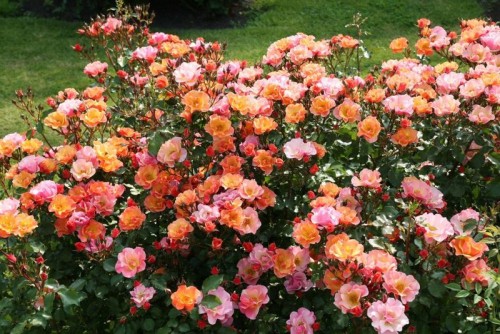

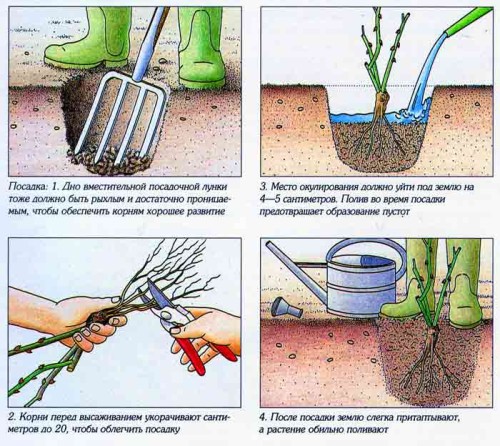
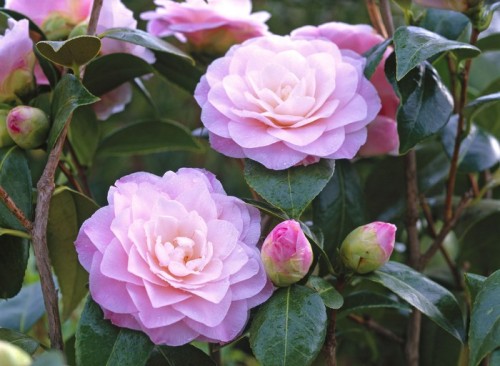
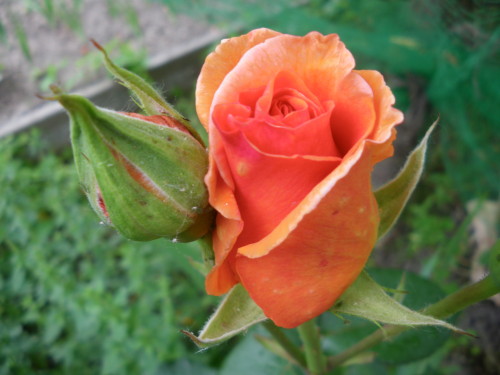
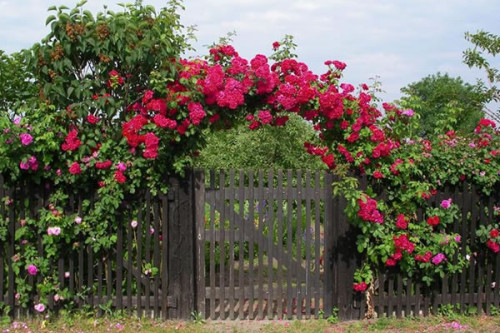
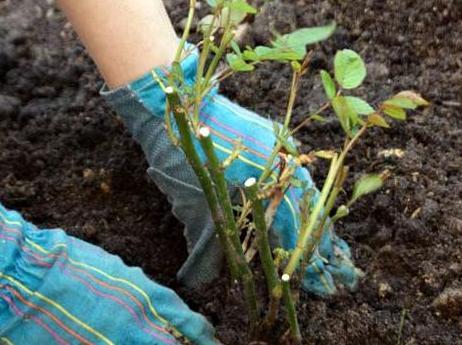
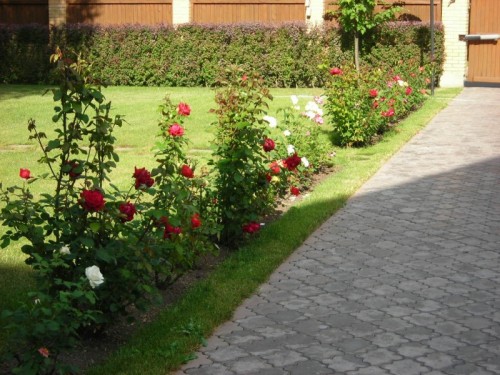












 Start a discussion ...
Start a discussion ...